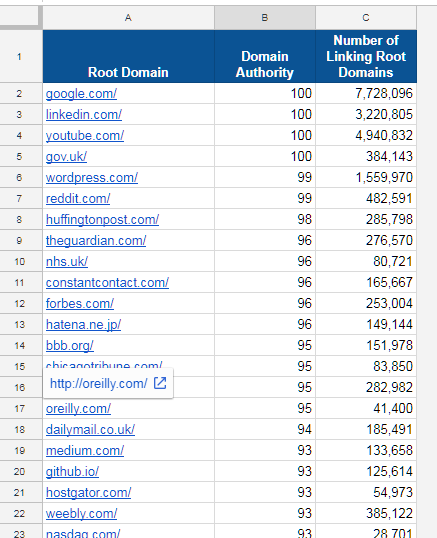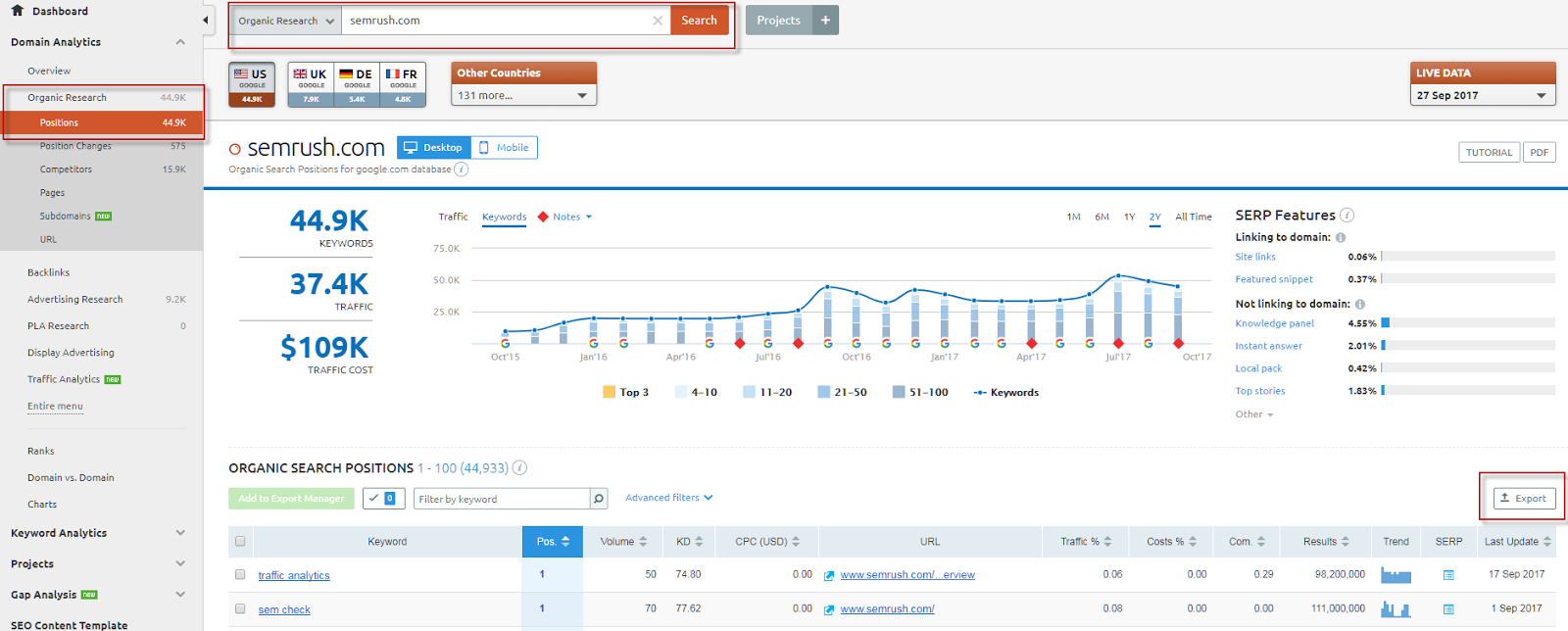How to Do a Competitor Analysis for SEO
Competitive analysis is a key aspect when in the beginning stages of an SEO campaign. Far too often, I see organizations skip this important step and get right into keyword mapping, optimizing content, or link building. But understanding who our competitors are and seeing where they stand can lead to a far more comprehensive understanding of what our goals should be and reveal gaps or blind spots.
By the end of this analysis, you will understand who is winning organic visibility in the industry, what keywords are valuable, and which backlink strategies are working best, all of which can then be utilized to gain and grow your own site’s organic traffic.
Why competitive analysis is important
SEO competitive analysis is critical because it gives data about which tactics are working in the industry we are in and what we will need to do to start improving our keyword rankings. The insights gained from this analysis help us understand which tasks we should prioritize and it shapes the way we build out our campaigns. By seeing where our competitors are strongest and weakest, we can determine how difficult it will be to outperform them and the amount of resources that it will take to do so.
Identify your competitors
The first step in this process is determining who are the top four competitors that we want to use for this analysis. I like to use a mixture of direct business competitors (typically provided by my clients) and online search competitors, which can differ from whom a business identifies as their main competitors. Usually, this discrepancy is due to local business competitors versus those who are paying for online search ads. While your client may be concerned about the similar business down the street, their actual online competitor may be a business from a neighboring town or another state.
To find search competitors, I simply enter my own domain name into SEMrush, scroll down to the “Organic Competitors” section, and click “View Full Report.”
The main metrics I use to help me choose competitors are common keywords and total traffic. Once I’ve chosen my competitors for analysis, I open up the Google Sheets Competitor Analysis Templateto the “Audit Data” tab and fill in the names and URLs of my competitors in rows 2 and 3.
Use the Google Sheets Competitor Analysis Template
A clear, defined process is critical not only for getting repeated results, but to scale efforts as you start doing this for multiple clients. We created our Competitor Analysis Template so that we can follow a strategic process and focus more on analyzing the results rather than figuring out what to look for anew each time.
In the Google Sheets Template, I’ve provided you with the data points that we’ll be collecting, the tools you’ll need to do so, and then bucketed the metrics based on similar themes. The data we’re trying to collect relates to SEO metrics like domain authority, how much traffic the competition is getting, which keywords are driving that traffic, and the depth of competitors’ backlink profiles. I have built in a few heatmaps for key metrics to help you visualize who’s the strongest at a glance.
This template is meant to serve as a base that you can alter depending on your client’s specific needs and which metrics you feel are the most actionable or relevant.
Backlink gap analysis
A backlink gap analysis aims to tell us which websites are linking to our competitors, but not to us. This is vital data because it allows us to close the gap between our competitors’ backlink profiles and start boosting our own ranking authority by getting links from websites that already link to competitors. Websites that link to multiple competitors (especially when it is more than three competitors) have a much higher success rate for us when we start reaching out to them and creating content for guest posts.
In order to generate this report, you need to head over to the Moz Open Site Explorer tool and input the first competitor’s domain name. Next, click “Linking Domains” on the left side navigation and then click “Request CSV” to get the needed data.
Next, head to the SEO Competitor Analysis Template, select the “Backlink Import – Competitor 1” tab, and paste in the content of the CSV file. It should look like this:
Repeat this process for competitors 2–4 and then for your own website in the corresponding tabs marked in red.
Once you have all your data in the correct import tabs, the “Backlink Gap Analysis” report tab will populate. The result is a highly actionable report that shows where your competitors are getting their backlinks from, which ones they share in common, and which ones you don’t currently have.
It’s also a good practice to hide all of the “Import” tabs marked in red after you paste the data into them, so the final report has a cleaner look. To do this, just right-click on the tabs and select “Hide Sheet,” so the report only shows the tabs marked in blue and green.
For our clients, we typically gain a few backlinks at the beginning of an SEO campaign just from this data alone. It also serves as a long-term guide for link building in the months to come as getting links from high-authority sites takes time and resources. The main benefit is that we have a starting point full of low-hanging fruit from which to base our initial outreach.
Keyword gap analysis
Keyword gap analysis is the process of determining which keywords your competitors rank well for that your own website does not. From there, we reverse-engineer why the competition is ranking well and then look at how we can also rank for those keywords. Often, it could be reworking metadata, adjusting site architecture, revamping an existing piece of content, creating a brand-new piece of content specific to a theme of keywords, or building links to your content containing these desirable keywords.
To create this report, a similar process as the backlink gap analysis one is followed; only the data source changes. Go to SEMrush again and input your first competitor’s domain name. Then, click on the “Organic Research” positions report in the left-side navigation menu and click on “Export” on the right.
Once you download the CSV file, paste the content into the “Keyword Import – Competitor 1” tab and then repeat the process for competitors 2–4 and your own website.
The final report will now populate on the “Keyword Gap Analysis” tab marked in green. It should look like the one below:
This data gives us a starting point to build out complex keyword mapping strategy documents that set the tone for our client campaigns. Rather than just starting keyword research by guessing what we think is relevant, we have hundreds of keywords to start with that we know are relevant to the industry. Our keyword research process then aims to dive deeper into these topics to determine the type of content needed to rank well.
This report also helps drive our editorial calendar, since we often find keywords and topics where we need to create new content to compete with our competitors. We take this a step further during our content planning process, analyzing the content the competitors have created that is already ranking well and using that as a base to figure out how we can do it better. We try to take some of the best ideas from all of the competitors ranking well to then make a more complete resource on the topic.
Using key insights from the audit to drive your SEO strategy
It is critically important to not just create this report, but also to start taking action based on the data that you have collected. On the first tab of the spreadsheet template, we write in insights from our analysis and then use those insights to drive our campaign strategy.
Some examples of typical insights from this document would be the average number of referring domains that our competitors have and how that relates to our own backlink profile. If we are ahead of our competitors regarding backlinks, content creation might be the focal point of the campaign. If we are behind our competitors in regards to backlinks, we know that we need to start a link building campaign as soon as possible.
Another insight we gain is which competitors are most aggressive in PPC and which keywords they are bidding on. Often, the keywords that they are bidding on have high commercial intent and would be great keywords to target organically and provide a lift to our conversions.
Start implementing competitive analyses into your workflow
Competitive analyses for SEO are not something that should be overlooked when planning a digital marketing strategy. This process can help you strategically build unique and complex SEO campaigns based on readily available data and the demand of your market. This analysis will instantly put you ahead of competitors who are following cookie-cutter SEO programs and not diving deep into their industry. Start implementing this process as soon as you can and adjust it based on what is important to your own business or client’s business.
Don’t forget to make a copy of the spreadsheet template here:







